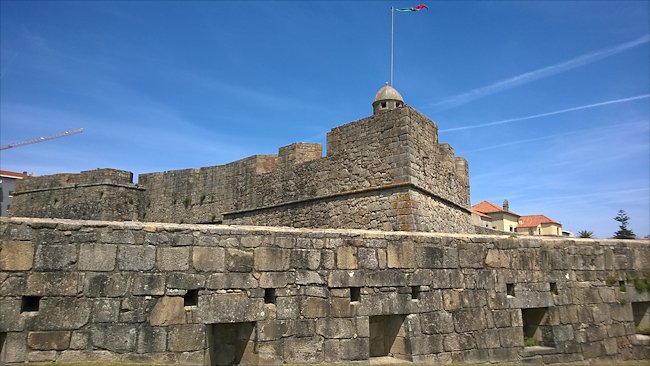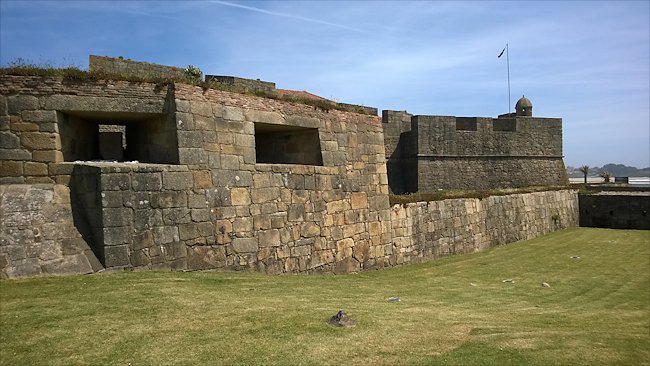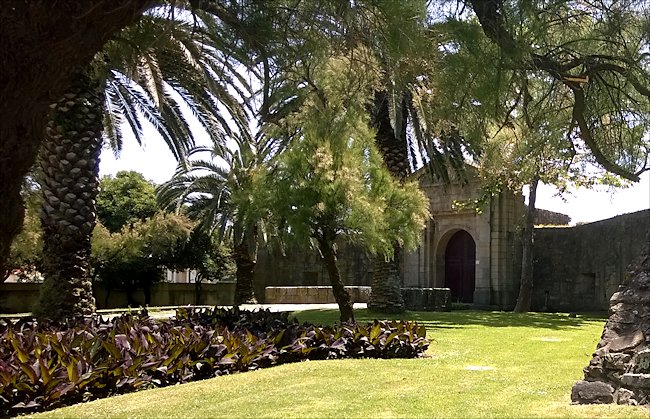Foz do Douro Castle
The Forte de Sao Joao Baptista (Saint John the Baptist) is built facing the Atlantic Ocean guarding the entrance to the River Douro and the city of Porto. It is also known as the Castelo da Foz de Douro (The mouth of the River Douro Castle)

The castle is currently occupied by the staff of the National defence Institute of Portugal.
The castle is currently occupied by the staff of the National defence Institute of Portugal. It is currently not open to the public but is worth a trip to explore this historical monument from the outside. It is situated on a road called the Esplanada Castelo, Foz do Douro.
Construction work was begun in 1570 and completed in 1647 when the modern ramparts were completed. It was part of the coastal defences protecting the Douro River sand bar. It contains the remains of the old church of St Joao da Foz do Douro which had been built by order of the Bishop of Viseu, Dom Miguel da Silva and designed by the Italian architect Francisco da Cermona.
The original Castle was constructed under the supervision of John Gomez da Silva, a Portuguese diplomat and relative of the bishop. The building consisted of a simple fortified structure around a monastery and church of the Benedictine monks of Santo Tirso. The Bishop added a church and Abbey.
King John IV of Portugal (1640 - 1656) feared that the Spanish were going to invade Portugal in 1642. He sent new military engineers to inspect the three castles along the Atlantic coastline that guarded the approach to Porto. Their report concluded that the current fortification was ineffective and needed strengthening.

The flat tops of the corner towers were used as artillery platforms
The old church was demolished to make way for the new construction. Records show that in 1684 that the castle was home to 22 gunners as well as infantry and cavalry regiments. The fort was captured by the French during the 19th century peninsular war. It also played a role during the siege of Porto in 1832 by helping land supplies destined for the city.
With the introduction of new Naval heavy artillery guns that could bombard coastal defences to rubble the role of the Castelo da Foz de Douro became obsolete. It was turned into a prison for political prisoners. Among the illustrious names who were detained in its prisons, Jose de Seabra da Silva (the Marquis of Pombal) and the Liberal Jose de Passos Manuel and Duke of Terceira.

This is the landward entrance to the Foz do Douro Castle
The castle features rectangular ramparts that connect with three and a half bastions. On top of these flat topped towers were artillery firing platforms. The guns could fire on ships entering or leaving the Douro River. They could also concentrate their fire on enemy ships out at sea approaching the mouth of the river.
On the landward side a large ornate neoclassical stone structure was built around a heavy wooden gate. It was constructed by architect Reinaldo Oudinot in 1796. In front of the gate was a drawbridge that could be raised in times of trouble. The walls either side of the main gate were covered in firing slots. An enemy trying to attack this gateway would be mown down under a hail of gunfire. The path that leads to the gate was a killing zone.
Travel books

